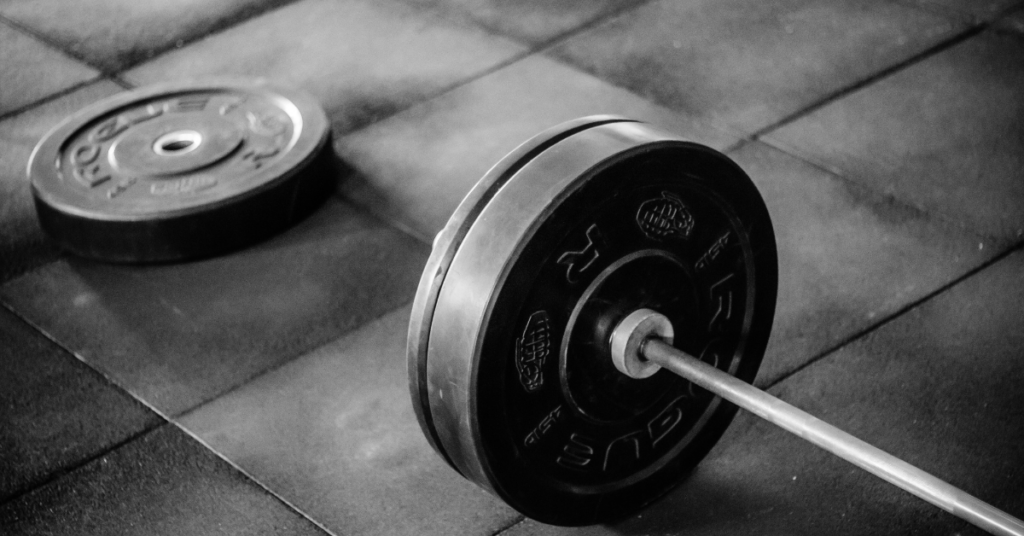With the increasing popularity of home workouts, setting up a home gym has become a convenient option for many. However, creating a sustainable and eco-friendly workout space can benefit not only your health but also the planet. From energy-efficient equipment to eco-conscious gear, an eco-friendly home gym reduces environmental impact, minimizes waste, and supports a green lifestyle.
This article explores practical tips for building an eco-friendly home gym, including sustainable equipment choices, green workout habits, and ways to reduce energy use. Transforming your fitness routine into a sustainable practice allows you to work out while aligning with your values, making every rep count for both your health and the environment.
Choosing Eco-Friendly Workout Equipment
1. Look for Sustainable Materials
Many traditional fitness products are made from synthetic materials that contribute to environmental pollution and waste. Instead, consider equipment made from sustainable materials, like natural rubber, bamboo, or recycled metals. Items like yoga mats, dumbbells, and resistance bands are now available in eco-friendly options that provide the same functionality with a smaller environmental footprint.
Eco-Friendly Equipment Options
- Yoga Mats: Opt for mats made from natural rubber or cork instead of PVC. Brands like Manduka and Liforme offer sustainable yoga mats designed to last longer and decompose more easily.
- Weights: Choose weights made from recycled metals or those with eco-friendly coatings. Look for brands that use sustainable materials and production practices.
- Resistance Bands: Some resistance bands are made from biodegradable or recycled materials, offering an eco-friendly alternative to synthetic bands.

2. Invest in Durable, Multi-Purpose Equipment
Rather than purchasing multiple single-purpose items, focus on versatile equipment that can be used in various workouts. Adjustable dumbbells, resistance bands, and stability balls are excellent choices for a minimalist and sustainable home gym. Durable, multi-purpose equipment reduces the need for replacements, minimizes waste, and saves space.
3. Opt for Bodyweight Exercises
Bodyweight exercises are highly effective, and they require minimal or no equipment. By focusing on bodyweight workouts like push-ups, squats, lunges, and planks, you can maintain fitness without the need for extensive gear. Bodyweight exercises allow you to achieve a full-body workout sustainably, using nothing more than your body and a bit of space.
Energy-Efficient Workout Tips
1. Use Natural Lighting
Place your home gym near a window or other natural light source to reduce the need for artificial lighting. Natural light not only saves energy but also enhances mood and productivity during workouts. If you’re exercising in the evening, choose LED lighting, which consumes significantly less energy than traditional bulbs.
2. Avoid Motorized Equipment
Motorized equipment like treadmills and ellipticals consume a lot of electricity, and non-motorized alternatives are available that don’t compromise on quality. Manual treadmills, rowing machines, and fan bikes are energy-efficient options that provide a challenging workout without the environmental impact of electric machines.
3. Exercise Outdoors When Possible
One of the easiest ways to keep your workouts sustainable is by taking them outdoors. Running, cycling, and bodyweight exercises can be done in a park, your backyard, or even on a hiking trail. Outdoor workouts eliminate the need for equipment, reduce energy consumption, and connect you with nature, providing mental health benefits as well.

Eco-Friendly Workout Gear
1. Sustainable Workout Apparel
Fast fashion extends into athletic wear, with many brands producing synthetic, low-quality materials that contribute to environmental waste. Instead, choose workout clothing made from organic cotton, bamboo, or recycled polyester. Look for brands that use eco-friendly production practices, ethical labor, and minimal packaging.
Eco-Conscious Clothing Brands
- Pact: Offers organic cotton athletic wear with ethical and eco-friendly practices.
- Patagonia: Known for its recycled polyester and eco-conscious production, perfect for durable workout wear.
- Girlfriend Collective: Produces stylish athletic wear made from recycled materials, including plastic bottles.
2. Reusable Water Bottles and Towels
Hydration is essential during workouts, but single-use plastic bottles contribute to pollution. Invest in a reusable water bottle made from stainless steel or BPA-free materials. For towels, choose organic cotton or microfiber options that are both absorbent and long-lasting. These sustainable choices reduce waste and support eco-friendly fitness.
3. Eco-Friendly Gym Bags
Many gym bags are made from synthetic materials that are difficult to recycle. Instead, look for bags made from sustainable materials like organic cotton, recycled polyester, or hemp. These bags are often just as durable as conventional options and come from brands that prioritize environmental responsibility.

Green Workout Habits
1. Avoid Single-Use Plastics
Traditional gym routines often involve disposable items like plastic water bottles, snack wrappers, and wet wipes. By eliminating single-use plastics, you can make your workouts more sustainable. Bring snacks in reusable containers, use cloth towels instead of wipes, and choose long-lasting gear to reduce waste.
2. Clean with Eco-Friendly Products
Maintaining a clean workout space is essential, but harsh chemical cleaners can harm the environment and indoor air quality. Choose biodegradable, non-toxic cleaning solutions for your home gym. Natural cleaning solutions like vinegar and baking soda are effective for disinfecting surfaces, mats, and equipment without harsh chemicals.
3. Recycle or Donate Old Equipment
When upgrading or replacing equipment, consider donating or recycling old gear rather than discarding it. Many fitness centers, schools, or community centers accept gently used equipment, giving it a second life. Recycling options are also available for certain types of metals, plastics, and fabrics, depending on your area.

Creating a Sustainable Workout Routine
1. Plan Short, Effective Workouts
High-intensity interval training (HIIT) and circuit workouts are efficient ways to stay fit with minimal time and equipment. These short, focused workouts are effective for cardiovascular health, strength, and endurance, without the need for prolonged energy consumption or extensive gear.
2. Incorporate Recovery Practices
Overtraining leads to quicker wear on equipment and increases the need for replacements. By incorporating regular rest days and recovery practices like stretching, foam rolling, and yoga, you can maintain a balanced workout routine. This not only extends the life of your equipment but also supports long-term fitness goals.
3. Track Progress with Minimal Tech
While fitness apps and gadgets can be helpful, relying on excessive tech for tracking can increase energy consumption and waste. Instead, keep a simple workout journal, where you can track progress, goals, and milestones. This approach promotes mindfulness and minimizes dependency on digital devices.
Benefits of an Eco-Friendly Home Gym
1. Reduced Carbon Footprint
An eco-friendly home gym reduces energy consumption, minimizes waste, and encourages sustainable habits. By choosing energy-efficient equipment, eco-conscious gear, and green workout practices, you’re actively reducing your carbon footprint.
2. Improved Indoor Air Quality
Using natural materials, non-toxic cleaners, and avoiding synthetic products contribute to better indoor air quality. This creates a healthier workout environment that supports respiratory health, particularly important during exercise.
3. Mindfulness and Connection to Nature
Sustainable fitness practices promote mindfulness by encouraging intentional choices in every part of the workout. Whether exercising outdoors or using natural materials, these habits foster a deeper connection to nature and promote a balanced, eco-conscious mindset.
For a rejuvenating way to improve your mental and physical health, explore our guide on The Benefits of Forest Bathingand Nature Therapy. Learn how spending time in nature can enhance your well-being and reduce stress.
Conclusion
Creating an eco-friendly home gym is an empowering way to align your fitness goals with sustainable living. By choosing equipment made from sustainable materials, embracing energy-efficient practices, and avoiding single-use plastics, you can make a positive impact on your health and the planet. Every small choice, from the water bottle you use to the equipment you purchase, contributes to a greener, healthier lifestyle.
Building an eco-friendly gym is about more than just the workout itself—it’s about adopting habits that support your body, mind, and the environment. Embrace sustainable fitness practices and enjoy the satisfaction of working out in a way that respects both your well-being and the planet’s future.
Ready to start building an eco-friendly home gym? Begin by choosing one piece of sustainable equipment, or try a bodyweight workout outdoors! Share your eco-friendly fitness tips in the comments below, and subscribe to our newsletter for more sustainable living insights
For quick and effective ways to enhance your well-being, check out our guide on 10 Minutes to Boost Mental Healthand Focus. Discover simple techniques to improve your mental clarity and overall mood.





















